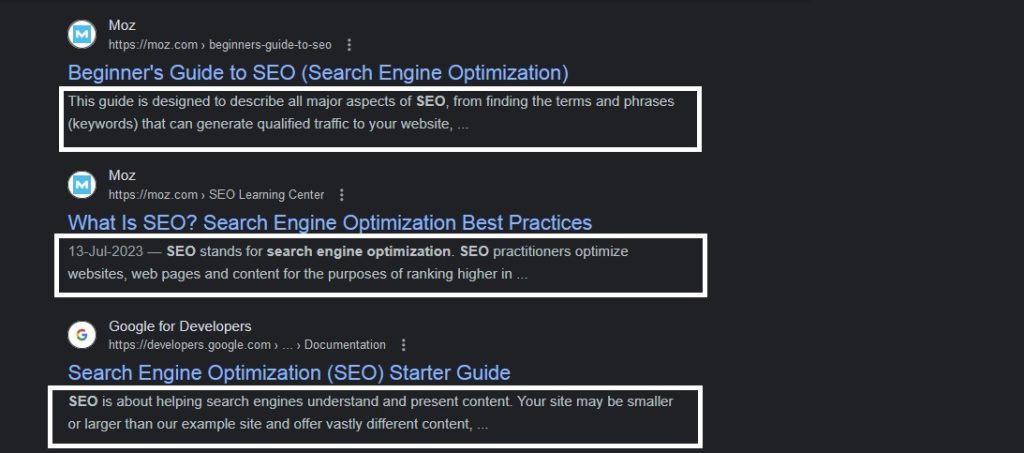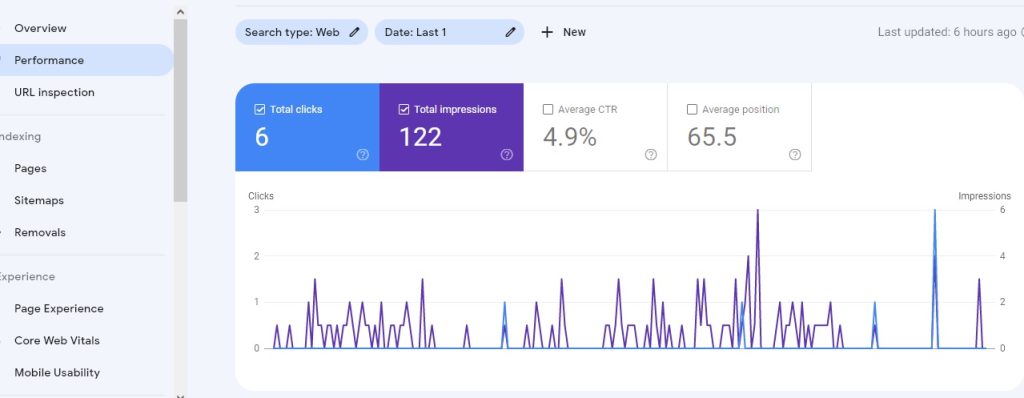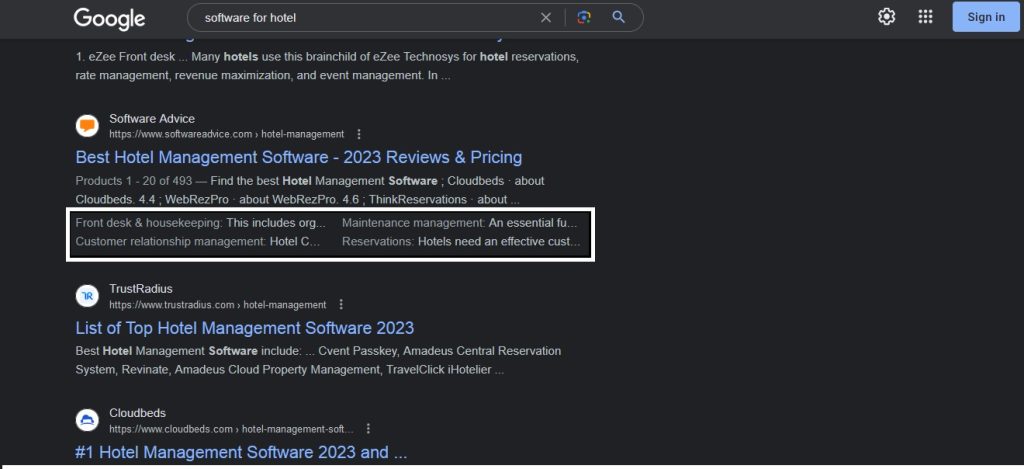Benefit of meta description in seo
In the realm of SEO, meta descriptions emerge as a powerful tool that goes beyond a mere summary of webpage content. They have the potential to influence user behavior, enhance click-through rates, and contribute to improved organic rankings. Crafting meta description that accurately represent the content, engage users, and prompt action is a fundamental aspect of effective SEO strategy. By understanding and harnessing the benefits of meta descriptions, website owners and digital marketers can create a more compelling online presence, driving organic traffic, user engagement, and ultimately, business success.
In the realm of search engine optimization (SEO), various techniques and strategies are employed to enhance a website’s visibility and ranking on search engine results pages (SERPs). One such technique that holds significant importance is the utilization of meta descriptions. A meta description is a concise summary of the content of a webpage, and it plays a pivotal role in influencing user behavior and search engine rankings. This essay delves into the multifaceted benefits of meta descriptions in SEO, exploring how they contribute to improved organic traffic, increased click-through rates (CTR), and overall user engagement.
The role of meta descriptions in SEO extends far beyond a mere technical aspect of webpage optimization. These concise snippets of information have the power to influence user behavior, enhance click-through rates, and contribute to improved organic rankings. By effectively utilizing meta descriptions to provide valuable insights, address user needs, and showcase the unique value of content, website owners can create a lasting positive impression on both users and search engines. In an era where user experience and relevance are paramount, meta descriptions emerge as an indispensable tool in the arsenal of SEO strategies, fostering organic growth, engagement, and success.
What is meta description?
A meta description is an HTML element that provides a brief summary of a web page. A page’s meta description tag is displayed as part of the search snippet in a search engine results page (SERP) and is meant to give the user an idea of the content that exists within the page and how it relates to their search query.

Meta description examples
<head> <meta name="description" content="This is an example of a meta description"> </head>
Process to write a good meta description?
If you don’t mention the keyphrase in the meta description at all, you’ll get a red traffic light. So, make sure to write one. But don’t stuff your meta description with your keyphrase, because that will also get you a red traffic light. And make sure to mention all the words from your keyphrase near to each other. Search engines are pretty smart nowadays, but you still need to make it clear what your page is about.
Here’s a list of elements you need to write a good meta description:
- Keep it up to 155 characters
- Use an active voice and make it actionable
- Include a call to action
- Use your focus keyword based or keyphrase
- Show specifications when needed
- Make sure it matches the content of the page
- Make it unique

“Hello, we have such and such new product, and you want it. Call us” This overlaps with what we said about the active voice, but we wanted to emphasize it again. The meta description is your sales text. Except, in this case, the “product” you are trying to sell is the page that is linked. Invitations like “Call us, Learn more, Get it now, Try for free, why us” come in handy, and we use them too.
Meta descriptions are not static entities but dynamic components that contribute to the overall success of an SEO strategy. Their multifaceted benefits encompass improved click-through rates, user engagement, brand recognition, and adaptability to changing search trends. A comprehensive understanding of the various roles that meta descriptions play empowers website owners to harness their potential and elevate their online presence. As an integral part of the broader SEO landscape, meta descriptions continue to be a key instrument in driving organic traffic, enhancing user experiences, and achieving digital marketing objectives.
1.Importance of Meta Descriptions in SEO
Meta descriptions are HTML attributes that provide a brief overview of the content found on a webpage. While they do not directly impact search engine algorithms, they hold immense value in enticing users to click through to a website. Meta descriptions serve as a snippet of information that appears beneath the title and URL in search results, offering users a glimpse into what the page offers. Crafting compelling and relevant meta descriptions can significantly impact a website’s performance in search results and attract a higher volume of qualified organic traffic.
2.Enhancement of Click-Through Rates (CTR)
A well-crafted meta description has the potential to significantly enhance click-through rates. When users are presented with informative and engaging meta descriptions that accurately represent the content, they are more likely to click on the link to satisfy their information needs. Studies have shown that an enticing meta description can lead to a noticeable increase in CTR, driving more organic traffic to the website. This increase in CTR not only improves the website’s visibility but also signals to search engines that the content is relevant and valuable, potentially resulting in improved rankings.
3.Influence on User Behavior
Meta descriptions also play a vital role in influencing user behavior and interactions with search results. An effective meta description can address the user’s query, showcase the unique value proposition of the content, and prompt the user to take action. By providing users with a clear understanding of what they can expect on the webpage, meta descriptions help in attracting the right audience and reducing bounce rates. Furthermore, a well-crafted meta description can set accurate expectations, leading to more satisfied users who are likely to spend more time on the site, explore multiple pages, and potentially convert.
4.Improved Organic Rankings
While meta descriptions themselves do not have a direct impact on search engine algorithms, their indirect influence on user behavior and engagement can contribute to improved organic rankings. As mentioned earlier, higher CTR and increased user engagement send positive signals to search engines, indicating that the content is relevant and valuable. This can lead to search engines rewarding the website with higher rankings, thereby creating a positive feedback loop. Thus, the strategic use of compelling meta descriptions aligns with search engines’ goals of delivering high-quality and relevant content to users.

5. User-Friendly and Informative
Meta descriptions serve as a means of communication between website owners and potential visitors. By presenting concise and relevant information, meta descriptions enable users to quickly gauge whether the webpage addresses their needs or interests. A well-crafted meta description provides a snapshot of the content’s key points, guiding users to make informed decisions about clicking through to the site. This user-friendly approach not only enhances user experience but also contributes to building trust and credibility with the audience.
6. Enhanced Brand Visibility and Recognition
Consistency in crafting compelling meta descriptions can contribute to building a distinct brand identity. When users repeatedly come across informative and engaging meta descriptions from the same brand, it creates a sense of familiarity and recognition. Over time, this recognition can lead to increased trust in the brand’s offerings and encourage users to actively seek out its content. As users associate valuable information and relevant content with a particular brand, the brand’s visibility and authority within its niche are further solidified.
7. Tailored Messaging for Specific Keywords
Meta descriptions offer an opportunity to tailor messaging for specific keywords and queries. By strategically incorporating relevant keywords into the meta description, website owners can ensure that their content aligns with user search intent. When users see their search terms reflected in the meta description, they are more likely to perceive the content as relevant to their needs, increasing the likelihood of a click-through. This tailored approach not only improves CTR but also contributes to the overall coherence of the SEO strategy.
8. Encourages Social Sharing and Engagement
In addition to search engine results, meta descriptions often appear when content is shared on social media platforms or other online channels. An engaging and informative meta description can serve as a preview of the content, enticing users to share it with their network. When users find value in the meta description, they are more likely to share the content, thereby expanding its reach and potentially driving more traffic to the website. This social sharing effect can amplify the benefits of well-optimized meta descriptions, extending their impact beyond traditional search results.
9. Adaptability for Evolving Search Trends
As search engine algorithms and user behaviors evolve, meta descriptions remain a flexible tool that can be adapted to accommodate these changes. Website owners can monitor keyword trends and adjust their meta descriptions to align with emerging search queries. This adaptability ensures that the content remains relevant and resonates with the current interests of users, thereby maintaining a competitive edge in the dynamic landscape of SEO.
10. Rich Snippets and Structured Data
Meta descriptions play a role in enhancing the appearance of search results through rich snippets and structured data. Rich snippets provide additional context about a webpage’s content, such as star ratings, reviews, and other relevant information. By crafting descriptive meta descriptions that highlight these features, website owners can increase the likelihood of their content being showcased with rich snippets. This visually appealing presentation not only attracts attention but also reinforces the credibility and relevance of the content, encouraging users to click through.

11. Mobile and Voice Search Optimization
In the age of mobile devices and voice-activated assistants, meta descriptions take on added significance. Mobile users and voice search users often receive truncated or summarized versions of meta descriptions. Crafting concise yet impactful meta descriptions becomes crucial in delivering a compelling user experience across various devices and search methods. Effective meta descriptions ensure that even in limited display space, users receive essential information that prompts them to explore further.
12. Segmented Audience Targeting
Segmentation is a powerful strategy in digital marketing, and meta descriptions can contribute to this approach. By tailoring meta descriptions to cater to specific audience segments, website owners can effectively address the diverse needs and interests of their visitors. Different segments may respond better to varying messaging, and well-optimized meta descriptions can help in capturing the attention of these different groups. This targeted approach can lead to higher engagement and conversion rates, as users feel that the content directly addresses their concerns.
13. Competitive Advantage in Crowded Markets
In competitive industries, where multiple websites vie for the attention of users, meta descriptions can provide a crucial competitive advantage. A thoughtfully crafted meta description that stands out amidst a sea of search results can be the differentiating factor that compels users to choose one link over another. By focusing on unique selling points, benefits, or intriguing hooks, website owners can create a sense of curiosity and urgency that prompts users to explore their content further.
14. Call-to-Action and Conversion Optimization
Meta descriptions can include subtle calls-to-action that encourage users to take specific actions once they land on the webpage. Whether it’s signing up for a newsletter, exploring related articles, or making a purchase, a well-placed call-to-action in the meta description can guide users toward desired interactions. This can lead to increased conversion rates and a more valuable user journey, aligning with the broader goals of a website’s SEO and marketing strategies.
15. Continuous Improvement and Testing
The dynamic nature of the digital landscape requires continuous improvement and adaptation. Website owners can leverage A/B testing and experimentation with meta descriptions to identify which variations yield the best results. By analyzing metrics such as click-through rates and user engagement, website owners can refine their meta description strategies over time, maximizing the benefits and staying ahead of evolving trends.
In the realm of SEO, meta descriptions emerge as a powerful tool that goes beyond a mere summary of webpage content. They have the potential to influence user behavior, enhance click-through rates, and contribute to improved organic rankings. Crafting meta descriptions that accurately represent the content, engage users, and prompt action is a fundamental aspect of effective SEO strategy. By understanding and harnessing the benefits of meta descriptions, website owners and digital marketers can create a more compelling online presence, driving organic traffic, user engagement, and ultimately, business success.






